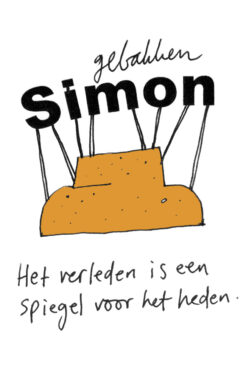How can we make the 19th century edible?
‘Simon’ is a living museum piece created for Huis van Gijn in Dordrecht.
The museum is the house of the banker and collector Simon van Gijn who lived there from 1864 until his death in 1922.
Van Gijn left the house and most of his collections to the Old Dordrecht Society. His wish was for the collections to be made publicly accessible and for his home to be converted into a museum, maintaining the interior in its original state as much as possible.
Inspired by the museum’s past I wanted the house to start living and breathing again. One of Simon van Gijn’s quotes, ‘ The present is a mirror of the past’, served as my inspiration.
The beautiful characteristic house is breathing the air of a past life that I, in some way, would like to catch and make tangible. When we walk through a collectors house we see beautiful objects but we miss the scents, the movements and sounds of the past. Museum van Gijn is one of those places that actively tries to relive and revive the past through all the senses. It is a wonderful place to visit.
Living, breathing, reviving, smelling.
By making use of sourdough the atmosphere of the Van Gijn house can literally be caught and again dispersed in odour by baking it.
Leaven ‘feeds’, after all, with the molecules in the air and therefore is always specific to the place where it is made.
So the design for Huis van Gijn turned out to be a cake. The base of this cake is sourdough-leaven, inspired by the famous Herman friendship cake. It needs to be fed. to be nourished, kept alive, baked, eaten, enjoyed and shared as well. A small system of molecular life translated into deliciousness.

Geesken Bloemendal ter Horst Former president of the Dordrechts Museum SocietyRising from it’s shape, spreading scent in museum van Gijn and caressing the tongue. This is the way Marije was able to seduce people into a remarkable experience.
Of course, this cake is called Simon, after the late Simon van Gijn. Simon is a cake that needs to be taken care of just like any other living organism and to be shared with friends or visitors of the museum.
The recipe book by Cornelia Johanna van Gijn- Hooghwinkel, the mother of Gijn, served as inspiration for the specific flavour. She writes about ‘Korinte’ which meant ‘krenten’ (Currants) and uses a multitude of exotic spices very representative for the Dutch colonial activities of the 18th and 19th century. These ingredient created the base of the endlessly tested recipe for Simon.
Based on the beautiful copper objects hanging in the kitchen of the museum I designed a specific copper mould for cake Simon. Copper is a soft material and every impression that is made leaves a trace. In this way, the objects are, not only because their shiny appearance, again a mirror of the past.
Simon was made for
Huis van Gijn
Dordrecht
In the context of
the ‘Scheffer commission‘
by the Friends of the Dordrecht museum.













